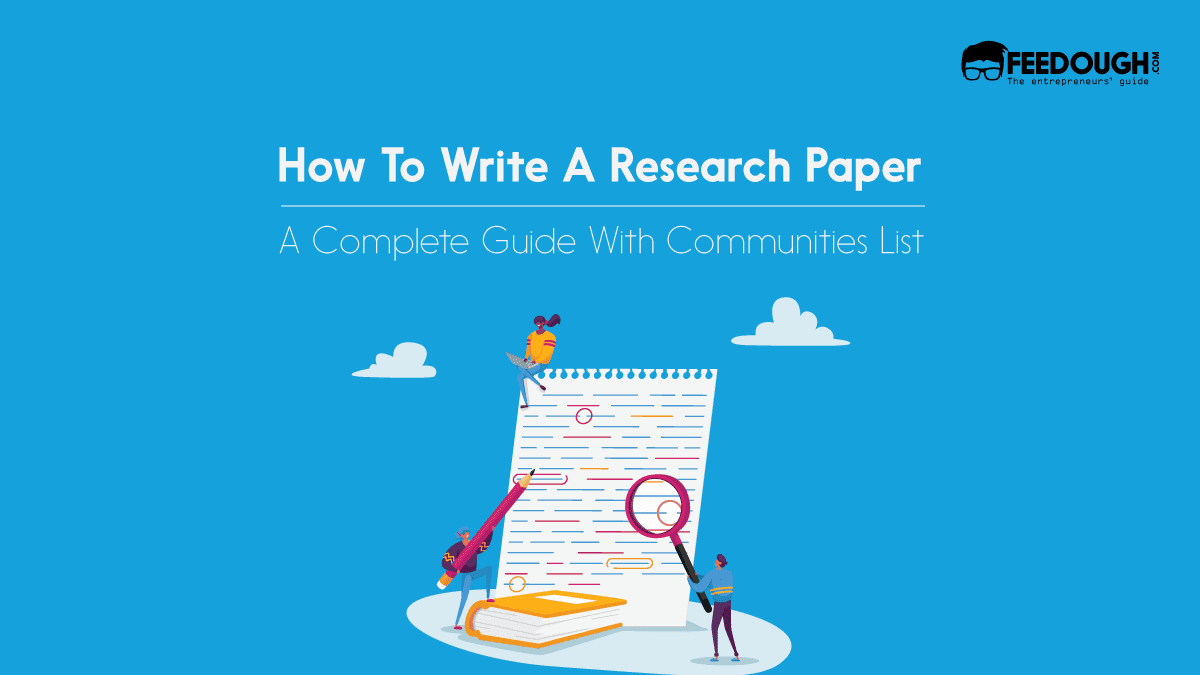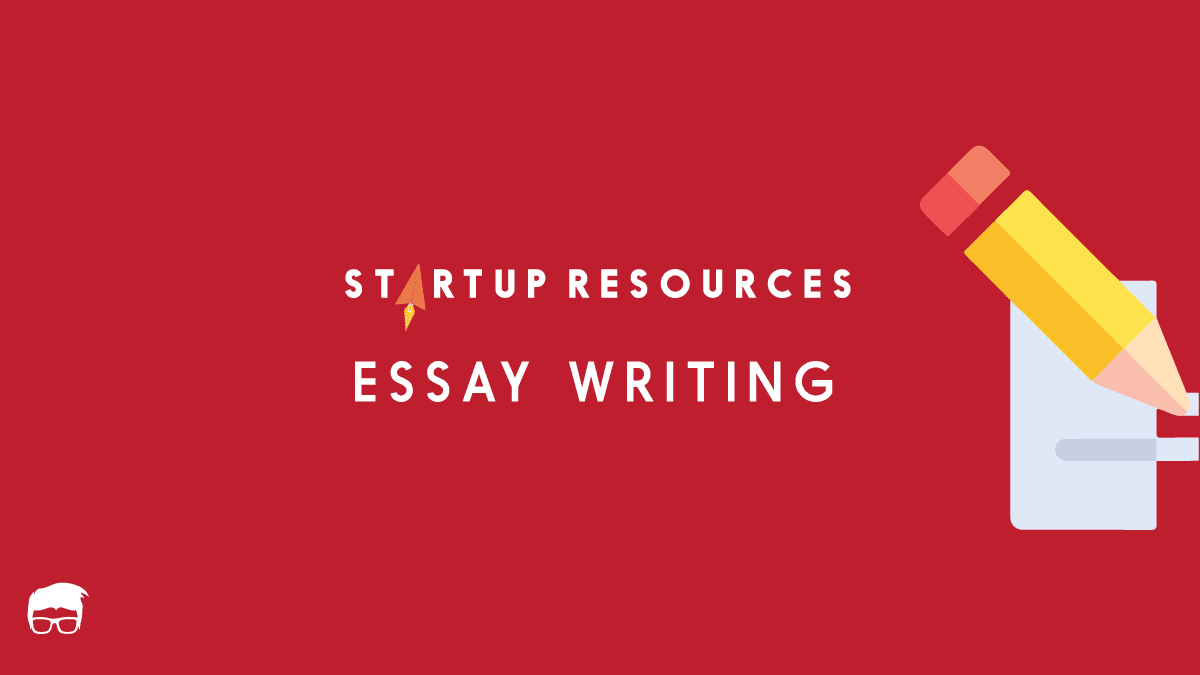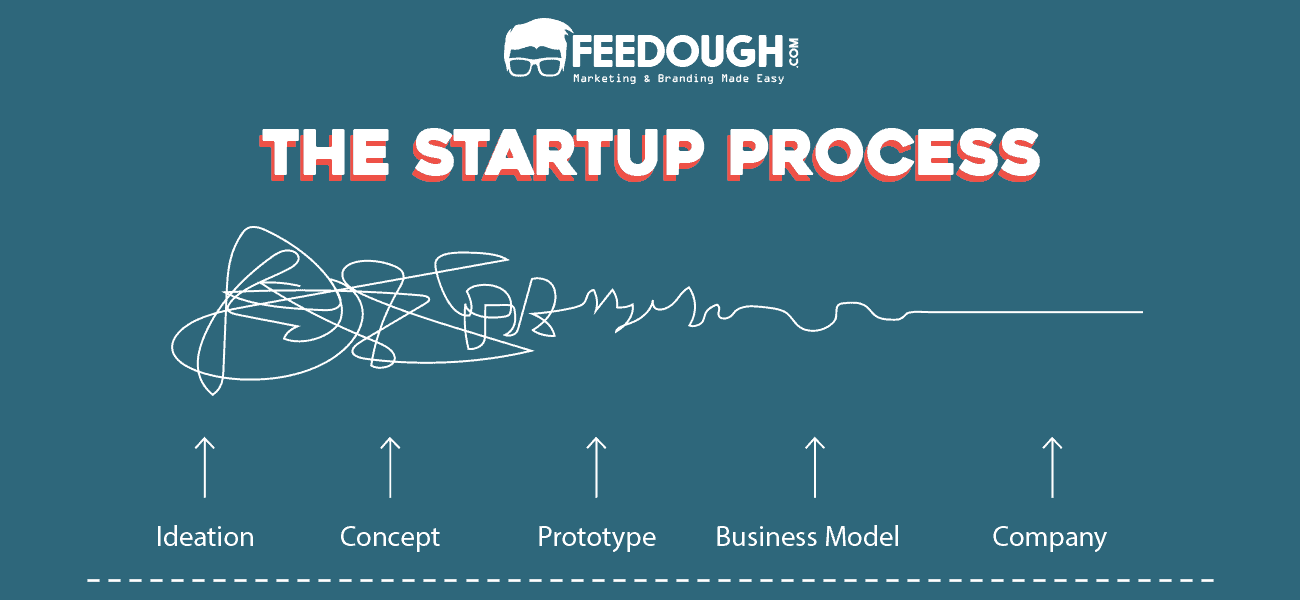Just the mention of a research paper sends shivers down the spine of whoever has to write it, be it a student or a professional.
All of us know it is a task known for its hard work, intense and extensive research, and a lot of challenges.
But there is a hidden truth! If you know how to approach it correctly, writing a research paper and, dare we say, enjoyable can get less intimidating.
So, here’s a guide to crafting a compelling research paper, elaborating on how to write a research paper for academic or professional purposes. We have separated each part for you and clarified how you must initiate your research, construct an outline, pen down the information, proofread it, and submit it.
But before we dive into the nitty-gritty details, let’s start by demystifying what a research paper truly is and what are the different types of research papers.
What Is A Research Paper?
A research paper involves studying, surveying, researching, and analysing a field of knowledge to find the best possible information about that topic or field.
However, as known widely, these research papers are not just limited to academics. Instead, they are a common and important medium of scholarly communication used by professionals, academics, and researchers across various fields and industries.
As these papers involve a systematic investigation, data collection, analysis, and interpretation of findings, these papers are well-structured, organised, and are supported by relevant evidence from credible sources. This makes it a suitable and helpful write-up for academic researchers, professionals, NGOs, market research firms, policymakers and government agencies, as it helps explain things elaboratively.
The research papers written by the students are typically a part of their educational experience. In contrast, the research papers written by professionals help them advance their knowledge, address a real problem, and contribute to their fields respectively.
These different types of research papers coming from different fields are often published in a journal, presented at a conference, and shared with the public to encourage learning, innovation, and evidence-based decision-making.
Types Of Research Papers
- Argumentative Research Papers: In this type of paper, you take a position on a controversial issue and argue in support of that position. More importantly, you have to provide strong evidence to support your argument and consider and respond to opposing viewpoints with strong points.
- Analytical Research Papers: The main purpose of an analytical paper is to examine a particular issue or topic in-depth and break down any complex topic into smaller components. After doing this, you examine the different points of view and perspectives on the same topic from all angles and conclude the paper with your own solution or interpretation.
- Descriptive Research Papers: The descriptive research paper aims to provide a detailed description or account of a subject, event, phenomenon, or process. These papers do not delve into any arguments or take ideas but emphasise neutral observations, facts, and descriptions.
- Experimental Research Papers: These papers significantly describe or share the report about a real experiment, and they share real knowledge rather than theoretical knowledge about a topic. They include detailed descriptions of the research methods, data collection, and statistical analysis and conclude with the findings.
- Review Papers: The review papers do not conduct their own research. They actually analyse, review, synthesise information and discuss relevant studies, trends, and gaps in the field from the research already done on a topic, phenomenon, or circumstance.
- Case Study Papers: The case studies examine a particular case in depth. The case study can be about a person, a group, or an event. Here, you include a detailed account of the case and must also analyse the factors that contributed to the case.
How Long Should A Research Paper Be?
When you find yourself searching for “How to write my research paper, and how long should a research paper be, here’s some advice for you: page numbers or word counts do not define the ideal length of the research paper. Instead, the research depth determines the presentation’s clarity and the analysis’s completeness.
In essence, you must prioritise substance over length to ensure that every section and argument makes sense and is written meaningfully to keep the overall quality and coherence intact. Additionally, you should not hit around the bush just to increase the number of worlds.
However, the theoretical answer to how long a research paper is:
- At the undergraduate level, you can make your research paper around 8 to 20 pages, which often corresponds to a word count of 2,000 to 5,000 words.
- Master’s level papers often tend to be more comprehensive and span 20 to 40 pages, with a word count typically around 5,000 to 10,000 words.
- Doctoral-level research papers, such as dissertations, are much longer and often exceed 100 pages or surpass 20,000 words, indicating that experts prepare these papers.
How To Write A Research Paper?
In the entire journey of writing the research paper, you must diligently do everything, starting from the right research to effective writing to produce the best results. But writing the research paper doesn’t mean directly getting started with the paper and pen.
There are key stages that help you compose the best research paper, from the pre-writing phase to proofreading and submitting it. So, let’s delve into the essential steps to craft a compelling research paper.
Pre-Writing Phase
To craft an excellent research paper, begin with careful preparation while you are in the pre-writing phase. This crucial pre-writing preparation will help you set a strong foundation for a well-structured and informative research paper. Here are the key steps you need to undertake in the pre-writing phase:
Select A Topic
While you are selecting a topic, a few things matter. Because the topic is something you will juggle with, you need to choose it wisely. There are the things to consider:
- Choose Wisely: Select a topic that genuinely interests you. Your interest and enthusiasm for that particular subject will fuel you to dig deeper into the research and writing process.
- Choose A Topic With Specificity: Choose a topic that is neither too broad nor too narrow. Your exploration will be more effective if you have a well-defined research question.
- See If The Topic Has The Relevance: Considering the relevance of your topic is a must. You need to do this to see if the topic is essential in your field of study and if it contributes to existing knowledge or addresses a current issue.
- Check Availability Of Resources: Before you commence, check if there are credible sources and research material related to your topic. If there are limited resources, the success of a research paper can be affected.
Conduct Research
The research of your topic has to be thorough, analysed through different angles, and not restricted to a particular side. In fact, I would say you must spend more time on research than on writing. Because “The time spent sharpening one’s axe is more valuable than the time spent cutting down a tree.” So, emphasise the importance of preparation and planning before undertaking a task rather than rushing into it without proper readiness.
You can utilise library resources, academic databases, and reputable online sources to gather relevant information. Academic journals, books, and scholarly websites are great places to kick-start your research.
Throughout your research, take notes, keep a record of the sources and page numbers for citations, and organise your notes logically for easy reference.
Create A Research Question Or Thesis Statement
So, before you come up with even a first draft, you need to write down your thesis statement or the research question.
- The research question is a clear and concise research question that your paper will address. A research question defines the scope and purpose of your study.
- The Thesis statement presents the central argument or hypothesis of your paper. It should be specific but arguable at the same time.
The thesis statement or the research question will be the base of your research paper, so ensure they align with your chosen topic and the goals of your paper.
However, when you start to delve into your research, you should keep the space open for refinement in your question or statement in case you think it can improve.
Writing Phase Of Research Paper
Organise Your Thoughts & Create An Outline
Before you delve into the writing part of the content, it is essential to organise your thoughts and craft a structure, i.e., an outline for your research paper. The created outline will provide a structure and direction to your paper, ensuring you follow a logical flow of ideas. Here’s how to go about it:
- Divide your paper into different sections and add subheads. Each section must include the introduction, literature review, methodology, results, discussion, and conclusion.
- Within each section, create a hierarchical outline with the talking points. This will help you trace the main points and subpoints you intend to cover.
- Also, as you create the section, ensure to create a silo in the sections and arrange each section in an orderly way to present your idea.
Write An Introduction That Hits The Right Cord
The introduction is the opportunity to engage the readers and set the premise for them, which helps them decide whether they want to invest their time in reading the complete research paper.
Thus, to set up the tone, the introduction should address the “what,” “why,” and “how” of your research:
- What does the paper include? Here, you must provide a brief overview of what readers can expect from your paper. You can mention the main sections and the key points you will discuss.
- Why Is It Worth Reading? Explain to the readers about the significance of your research. You can add what problem it addresses and why this problem is necessary or relevant. In this section, you can add the FOMO through your questions to convince the reader that your paper adds value to the field.
- How You’ll Build Your Argument? You can give a little glimpse into the approach you have followed in your research paper. You can create a section mentioning your methodology or research methods. This will also increase your authority and authenticity in front of the raiders.
Get Started With Your First Draft
Once you have your outline ready and a good understanding of what your paper has to include, you can start writing your first draft. At this moment, you do not need to write everything with perfection. All you need to do is just get things on paper.
Even if you do not feel like starting with the first section, it is the first draft, so you can always start with any section you think you are prepared to complete first. The primary goal is to capture your ideas, evidence, and insights in your outline.
Moreover, in the first draft, you can add all the relevant information you think you have related to the topic. While later refining your draft, you’ll have an opportunity to fine-tune and filter what information feels right to include and what doesn’t.
Address A Strong Counterargument To Strengthen Your Assertion
To strengthen your assertion, you must address a strong counterargument in your research paper.
You can begin by identifying and adding the most substantial counterargument to your thesis or main point. You must understand the opposing viewpoint thoroughly and include its essential claims and evidence. Then, after acknowledging the counterargument, provide a thoughtful and well-reasoned denial of that argument. Explain why the counterargument may be valid in some contexts but ultimately falls short in the context of your research, and thus, you deny it.
To support your denial argument, shelf some credible reasoning evidence and show how your position is more valid, well-supported, or aligned with the overall goal of your research.
This will demonstrate that you have considered different perspectives and are addressing the issues comprehensively.
Summarise Your Research Paper Strategically
This summary of your research paper is the conclusion. Here, you can:
- Restate the main points of your research paper. This reminds readers of the primary focus of your paper.
- Summarise the most significant findings and results from your research. You can be crisp with your statement, but add enough detail to convey the importance of these findings in the summary.
- Address the question or thesis statement again at this moment. Revisiting your thesis statement or addressing the question again shows how nuanced your understanding of the subject is.
- Lastly, conclude your summary with a powerful closing statement that reinforces the significance of your research. Focus on the most critical points to leave a lasting impression and give readers a memorable takeaway.
Revise, Edit, & Proofread Your Paper
After completing the first draft, the writing or the work doesn’t end here. The next crucial step is to revise thoroughly, do the heavy editing, and proofread the entire paper. This stage makes your paper polished and ready for submission. Here’s what all you need to do:
Ensure The Paragraphs Are Well-Structured and Have a Transition
If you are making a research paper for your organisation as a professional or a student, it is either way necessary to check each and every paragraph and sentence. You need to do this to check if each section provides coherent supporting details. This creates a flow in your argument and helps readers follow that.
Besides, when there is a flow inside a paragraph, you must also ensure the transition between the paragraphs stays intact. Using transitional words and smooth transitions helps the readers to navigate your idea more easily.
Cut Out The Fillers & Refrain From Beating Around The Bush Statements
Every reader likes the concise reading. So, when revising and refining your research paper, examine your paper for unnecessary phrases, words, or sentences that do not contribute to your argument or seem to be a filler. Be concise and direct in your writing.
However, if you have paragraphs written, do not lose them entirely. You can save them in other documents. You never know when you’ll need that paragraph for another assignment.
Be clear with your arguments. Ensure that your statements are clear and to the point. You must also avoid vague or overly complex language or sentences that confuse the readers.
Proofread To Catch Errors In Spelling, Grammar, and Formatting
After you have completed all the sections of your research paper and added the information required, it’s time to re-read and proofread your paper.
You need to carefully proofread each and every sentence of your paper to catch spelling and grammar errors. Pay attention to common mistakes such as typos, subject-verb agreement, hyphens, and other punctuation.
You can always use Grammarly to proofread your paper and check for plagiarism.
Another important thing you need to take care of is checking that your paper adheres to the required formatting style, for example, APA, MLA, or Chicago.
Also, verify that your citations, references, and page formatting are consistent and accurate.
Wrong or inconsistent formatting always has a negative impact, even if you wrote a research paper with high-quality research.
Feedback & Submission
Seeking feedback and a second opinion is always a good idea before submission. So, Consider seeking feedback from peers, colleagues, mentors, or just any of them. Getting a fresh perspective or improvement remarks can help you identify areas for improvement and clarity.
However, if you do not have peers to get feedback or do not want to share it before submitting it, read it aloud and listen to yourself consciously. Reading your paper aloud will help you identify awkward phrasing, missing words, or grammatical errors that you might have skipped during silent proofreading.
Take time to meticulously proofread and polish your research paper and produce a professional-grade final product.
Once you have carefully reviewed and refined your research paper, it’s time to prepare it for submission. Do not just mail your research paper to the concerned person or guide, but ensure that you follow the submission guidelines provided by your institution or publisher.
Bottom-Line?
The art of writing a research paper is more like embarking on a journey of intellectual exploration. It is not just about meeting the word count, formatting the guideline, or answering the generic questions. Instead, it is about diving deep into the subject, evaluating the topic, writing things from different perspectives, and sharing your insights. It is also about how well and in what quality capacity you contribute to the world of knowledge.
So, as you work on your research paper, remember that you are not solely writing down the words but doing the work that goes beyond the words and pages. Your dedication and hard work should advance knowledge and share ideas in the right way that genuinely helps you mark your presence in the world of learning and discovery.
Ravpreet is an avid writer, prone to penning compelling content that hits the right chord. A startup enthusiast, Ravpreet has written content about startups for over three years and helped them succeed. You can also find her cooking, making singing videos, or walking on quiet streets in her free time.





![How To Write An Article? [Detailed Guide] how to write an article](https://www.feedough.com/wp-content/uploads/2023/05/how-to-write-an-article-150x150.webp)



